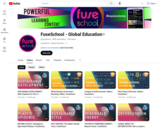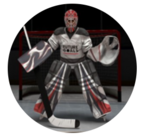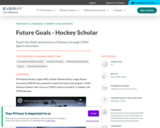The National Hockey League (NHL) and the National Hockey League Players’ Association (NHLPA) have partnered to launch the Future Goals program, a North-American initiative that provides K-12 students with STEM education. EVERFI’s Hockey Scholar course, with both a math and science edition, leverages highly interactive gameplay and the sport of hockey to reinforce key concepts like scientific thinking and data analysis, exposing students to foundational STEM concepts through real-life applications.
This Course Covers Foundational STEM Concepts Scientific Thinking,Data/Graphical Analysis
Uncover The Ice - Students derive area formula and proper units of measurement to calculate the area of each section of ice as they remove covering.
Area, units, unit square, square meters, formula 4 SS4.2 5 SS5.1-4 6 SS6.2 7 SS7.2 8 SS8.2-3
Paint The Ice - Students apply knowledge of geometric figures and coordinate planes to paint the ice rink. Point, coordinate, x/y-axis, line, chord, segment, parallel, right angle, congruent perpendicular, diameter, radius5 SS5.5 6 SS6.3-47 SS7.1-5
The Pass - Students measure and find patterns between angles lying on a straight line, by setting up a pass that bounces off the boards and discover the Law of Reflection based on their data. Protractor, degrees, right angle, straight angles, Law of Reflection, adjacent angles 6 SS6.1, SS6.3 7 SS7.1, SS7.3 8 OP8.1
The Shot - Students explore the interaction between applied force and frictional force and use this knowledge to hit specific targets on the ice.
Force, magnitude, direction, friction, Newton’s 1st Law 5 FM5.1-3 6 FL6.2
Speed - Students record and calculate a player’s average speed (using d = v/t formula) over short and long sprint distances Rate, units of distance (m, km, mi), trials, average, rounding, formula 5 SP5.3 6 SP6.1, N6.8 7 SP7.1-2 8 P8.1, N8.3
The Skate Blades - Students help players stop on a certain target based on the radius of hollow of their skate blades, and use this data to figure out the correlation between radius of hollow and stopping distance. Variables, radius, correlation 5 P5.1, FM5.1 6 P6.1, P6.3, FL6.3 7 P7.1, SS7.2, SP7.2 8 P8.1








